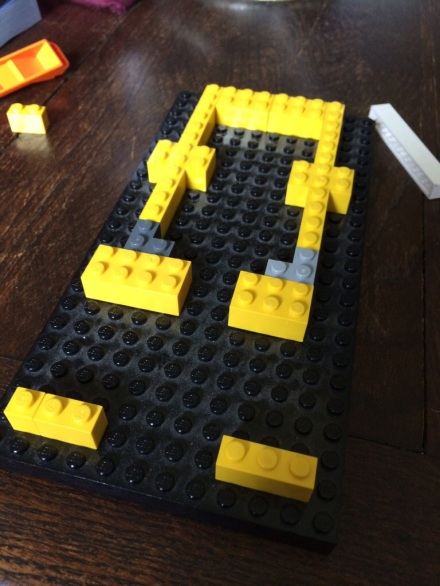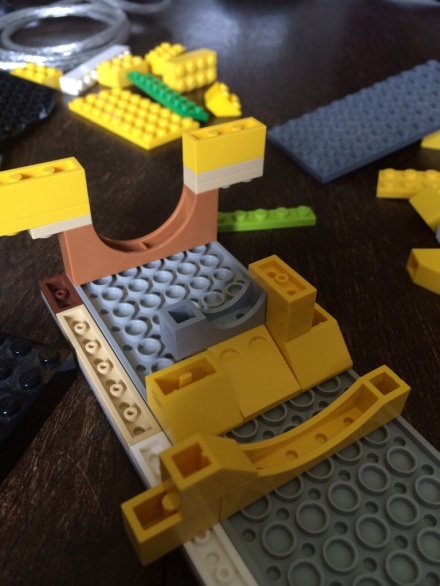A Lego Magazzini #buildyourownportus
My post a couple of weeks back on the Portus MOOC, and trying to model Building Five in Lego aroused some visits from my fellow students, a few comments in the MOOC itself, and at least one other attempt to use Lego Digital Designer to as an archeological tool.
It so encouraged Graeme Earl that he wrote about it on Southampton’s MOOCs blog He also provides a link there to some plans and drawings of the Grandi Magazzini Di Settimio Severo that he persuaded Grant Cox (he of the astounding computer models) and Christina Triantafillou to create.
The challenge is evident. Can we, the MOOC’s students, rise to it and build our own models of this enormous building?
One could of course, use the drawings themselves as building blocks, reproducing them to the correct scale, sticking multiple copies to card, and assembling them with glue.
Or, of course, I could turn to Lego again.
This is another huge building. Bigger even than building five. In videos from Week one and week three of the MOOC, Simon Keay strides down the remains of the corridor as though it’s a street. (EDIT: or am I confusing that with the Portico di Claudio?) So in the end I’ll resort to digital designer again. But first let me get a feel for the shape by getting my hands around some real bricks.
Looking at the plans, it’s apparent that many of the storerooms are the same structure, repeated again and again across each wing and two floors. There are other spaces, stairwells etc that don’t conform to the pattern. But to begin with, I’m looking for a modular design for the storerooms.
First of all I lay out a simple version of the design on a baseboard:
Here, I’ve made a very unscientific decision about scale. After my attempt at building five, I’m less interested in building it to minifigure scale. I’m not sure even LDD has enough virtual bricks (!) and anyway I don’t want to place them all. So instead I’m experimenting with the smallest scale possible, and here I’ve decided I can get away with one stud = one meter. Of course the plans show varied decimal fractions of a meter in the metrics, so I’m rounding up and down arbitrarily. Romans – if you find this blog through some sort or temporal anomaly – do not scale up my Lego measurements. You’ll be very disappointed.
Even without the correct scale, the act of modelling makes one think about how the spaces go together, and really interrogate the plans. The picture above shows one of the arches which looked out over the Claudian Basin and the sea beyond. Now though I’m wondering – is it open to the floor? Or does it have a sill? For the time being I’m leaving it open to the floor.
Then there are decisions to make that aren’t about an absence of information, but rather the limitations of the Lego System. The plans show domed interior ceilings, almost like vaulted pillars in medieval cellars, but with Lego I can only have arches. So should I put them across the room, or down its length, because as the images above show, it could work both ways. In the end I decide to put them across the room, and fake the vaulting with some inverse roof tiles. Like so:
“Minifigure scale” is well known among adult fans of Lego, but there is a smaller scale, based on the pieces used in some of Lego’s board games such as Heroica. Sadly these “microfigures” are still too big to populate my building, so I resort to a minifigure film star’s Oscar statuette to give the building a sense of scale. Talking of which, I know the width of this interior doorway but the plans don’t show the height:
Finally, I want to get rid of the baseboard. Having got this far in plastic, and got an idea of the size of pieces I need, I’ll be moving onto virtual bricks. Then I’ll need to create repeatable module that clicks together, so I’m better off creating a “baseboard” that goes on top of the structure.
That’s enough for tonight. Next time, the virtual model.








